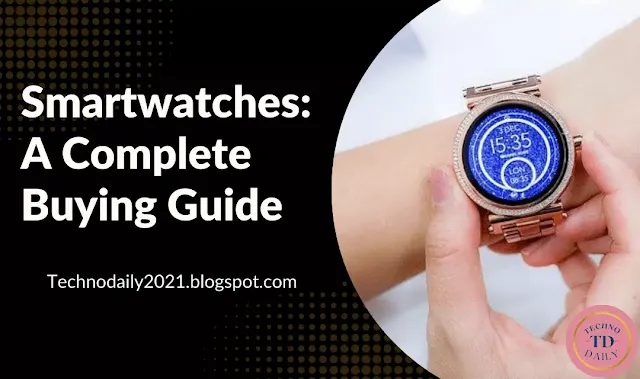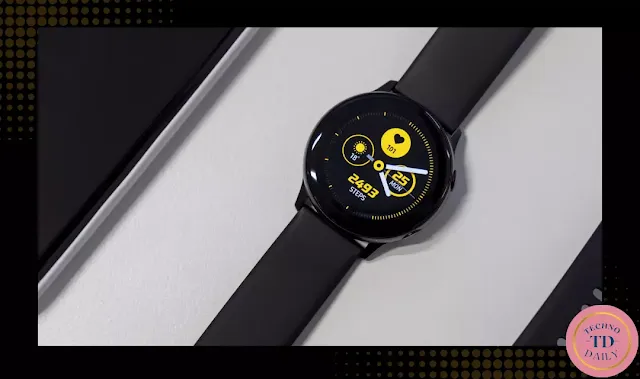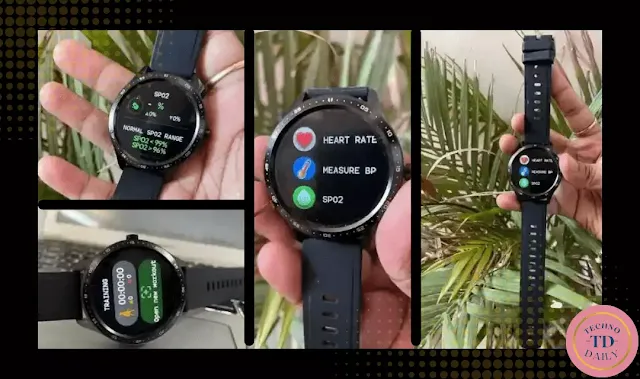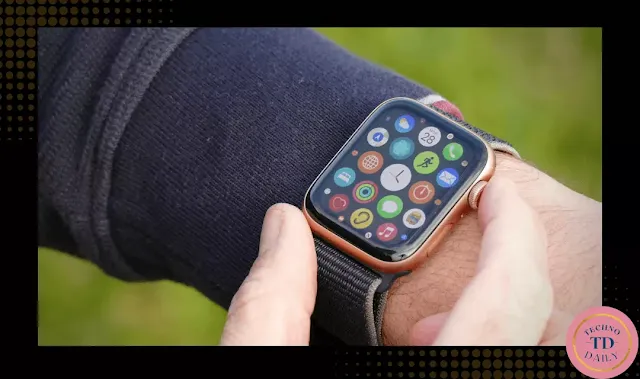Hello Friends ,Nowadays all Smart Appliances are getting popular and Smartwatches are becoming popular too and that's why we are here with a new interesting and useful article.
Read this full article, carefully because this will definitely help you to decide on your smartwatch and save up lots of money. and then definitely forward this article to others who all are planning to buy a smartwatch, This is a complete Smartwatch Buying Guide
Smartwatches: A Complete Buying Guide with Best Recommendations
So let's get started...
Smartwatches VS Smart bands.
Smartwatches are used for everyday work and they are mostly available in square or round-shaped displays with all features like Sp02, heart rate, etc.
Smart bands are mainly used as fitness trackers, they tracked all fitness-related measurements like calorie burn , step counter etc. They are usually available in rectangle-shaped displays.
A smartwatch is a true companion for your smartphone and it does more than just keep time. View notifications directly on your wrist, track how to fit you are, answer calls, control music and keep up with social media updates, all without taking your phone out of your pocket. Let's take a closer look at what these versatile devices can do.
Android watches VS Apple watches
First of all Android watches which are popularly made by almost all smartphone companies like Realme, Xiaomi, Samsung, one plus, etc All they have a wide range of ecosystems it means they if you buy any Android smartwatch of any brand, that will work quite well and equally with all android phones irrespective of brand and they can be seamlessly connected through their special app, which makes them fully customizable and user friendly.
Apple watches are used with iPhones only as they help in providing the best sync and connection other than an Android smartphone.
We will discuss more this in further subtopics.
Smartwatch buying guide: Quick tips
- Don't buy a smartwatch without confirming that it will work with your smartphone.
- For example, Apple Watches only works with iPhones. Google's Wear OS platform and Samsung's Tizen watches will work with both Android phones and iPhones, but with fewer features than if you use them with Android devices.
- Pick a watch with a heart rate sensor and GPS (to track your runs) if you're a fitness buff.
- Pay attention to rated battery life when shopping. Hybrid smartwatches that look more like analog timepieces tend to have the longest battery life, but they don’t have touchscreens.
- Check that the watch band's clasp or buckle is easy to use and easy to swap. Also, make sure that it’s easy for you to find replacement bands.
- The selection of apps is a factor, but it’s not as important as compatibility, design, and other features.
Smartwatch buying guide: OS and phone compatibility
As most smartwatches are designed to serve as companions to your smartphone, device compatibility is very important. For Example, Samsung Galaxy watches which are Tizen-powered and Galaxy Watch Active 2 work with multiple Android handsets as well as in iPhones. Although you should also note it’s easier and most convenient to use those watches with an Android device, and specifically their respective Brands.
Google’s Wear OS runs on smartwatches from Fossil, Realme, Huawei, Redmi, and others. It's most compatible with Android smartphones, although some will work with the iPhone but with limited features only. Google makes it easy to check whether your smartphone is compatible: just go to g.co/WearCheck from your smartphone browser.
As the Apple Watch only works with the iPhone. The preinstalled Apple Watch app for the iPhone is where you'll find the watchOS App Store. There, you can install and update the watch versions of your favorite iOS apps or find new ones. The store has lots of features, everything from games to fitness-tracking apps to extensions of your most-used productivity apps so you can get notifications or see Trello cards and many more.
NOTE: Don't buy a smartwatch unless you know that it will work with your smartphone.
Smartwatch buying guide: OLED vs. LCD Display
Most smartwatches use a colorful LCD screen or AMOLED display, which lets you view photos, apps, and other content in richer color, and tend to be brighter. But the main problem is shorter battery life, though smartwatch makers are improving their device's efficiency day by day.
Smartwatches on the higher side of price offer crisp OLED displays instead of LCD displays to allow for slimmer designs and best display and color accuracy. Apple developed its first OLED display to make the first-generation Apple Watch as thin as possible. But in the Android world, Samsung created the first-ever, OLED smartwatch for their Galaxy Gear, in 2013.
Smartwatch buying guide: Touchscreen vs. Side Buttons
Wear OS does a nice job of presenting card-based notifications you can easily dismiss with a swipe, but there's a lot of swiping involved to get to other apps and options within apps. You can, however, switch between cards with a flick of your wrist.
Apple opted for a combo approach for the Apple Watch, offering a touch display and both a digital crown and a side button on the right side. You can use the crown to quickly zoom in on content or to scroll, and the screen uses Force Touch, which knows the difference between a tap and a long press. A press of the side button brings you to your dock of frequently used apps.
The Samsung Galaxy Watch and Samsung Gear 3 have a bezel that you rotate to scroll through menus. These are used in combination with touch.
Smartwatch buying guide: Design and Personalization
The better smartwatches offer a choice of straps and/or the ability to swap them out for a third-party option. This is important if you want to personalize the look of your device.
Most smartwatches today offer plenty of customization options before purchase. For instance, you can pick the band color and material, as well as face color, finish, and size.
Keep in mind that comfort counts for a lot, as does the ease with which you can fasten the watch to your wrist. We would definitely avoid any smartwatches with cumbersome clasps that require too much force to open and close. But Thankfully, most new watches use standard buckles.
Now, most smartwatches are sporting in round faces now, making them look more like traditional timepieces. Newer ones are getting slimmer and smaller.
Traditional watchmakers are also joining the fray with Android Wear devices that combine the style of an analog watch with the smarts of Google's watch operating system.
Smartwatch buying guide: App selections
The smartwatch category is maturing, and some models now have hundreds or even thousands of apps.
The Apple Watch has the most well-rounded app roster thus far, with more than 20,000 available. You can do everything from control your Philips Hue lights (and all the other best smart home devices) to order out lunch with Seamless.
There's a dedicated Apple Watch App Store for installing those apps in the Apple Watch app for iOS. Check out our roundup of the best Apple Watch apps for more on what to expect.
Google's Wear OS also has thousands of apps optimized for its platform. You install apps directly on the watch itself, rather than having to go through your smartphone first. Wear OS has many of the same apps that watchOS does, which enables you to schedule a ride, and WhatsApp, which lets you reply to messages with your voice.
Other proprietary systems, especially Samsung's Tizen OS, tend to be deficient in the apps department.
Fitness features, heart rate, and GPS
As fitness trackers continue to attract attention, smartwatch makers are getting in on the action by integrating activity-monitoring functions. Some smartwatches depend on your smartphone for activity tracking, but most at least have a built-in pedometer for tracking steps.
If you plan to use a smartwatch primarily for working out, you may want to consider fitness trackers with smartwatch-like features, such as the Fitbit Versa or the Garmin Vivoactive lines, both of which let you change the watch face and read notifications. The Versa goes even further by offering female health features, such as the ability to log periods and record symptoms, as well as compare your cycle against health stats like sleep and activity.
Most Wear OS devices have a heart rate monitor built-in, but we haven't found them to be as reliable as dedicated fitness trackers like Fitbit Charge 4. The Apple Watch heart rate sensor proved more accurate in our testing.
In addition to heart rate monitors certain models have GPS, which makes them more attractive to those who want to go running or biking outdoors, and want to track their distance and pace.
However, keep in mind that using GPS will have a significant impact on battery life.
Calling and mobile payments
Do you want to make calls from your wrist? Some have built-in LTE so you can leave your phone at home. The AT&T’s NumberSync and Verizon's NumberShare feature let you use the same number on your phone and the watch, and your phone doesn't need to be nearby or turned on. You will have to pay for a separate data plan for your smartwatch, which is something to consider if you want to take advantage of its cellular connectivity.
Many smartwatches have NFC chips inside, which means you can use them to pay for stuff, even without a phone nearby. All Apple Watch models have Apple Pay enabled, even without an iPhone nearby or an LTE connection. Wear OS watches that support Android Pay include the LG Watch Sport, Huawei Watch 2, and Tag Heuer Connected Modular 45. Samsung’s own mobile payment system, Samsung Pay, works on all of its newest models.
Garmin and Fitbit, which are known for their fitness-focused watches, have added mobile payments to their latest devices, too.
Battery life and charging
Most smartwatches with color screens tend to last one to two days between charges (and sometimes less than one day), so you'll want to consider how often you're willing to keep plugging in your watch.
Watches with voice capabilities won't last nearly as long when you use them as phones, but that's to be expected. The Apple Watch lasts about 18 hours of mixed-use on a charge.
Most smartwatches, including the Apple Watch and Samsung Gear Sport, use wireless charging, which is convenient: You don’t have to plug your device directly into a charger; instead, you lay it flat on a charging puck.
Read More About:
So, that's it. all these are some of the major points to keep in mind before buying a smartwatch for your day to make productive.
I hope this Smartwatch buying guide has provided you a better understanding of all the features and their uses, and mostly the comparison between different OS in smartwatches.





This comment has been removed by a blog administrator.
ReplyDeleteThanks a Lot. Keep reading...!
DeleteThis comment has been removed by a blog administrator.
ReplyDeleteThanks a Lot. Keep reading...!
DeleteThis comment has been removed by a blog administrator.
ReplyDeleteThanks a Lot. Keep reading...!
DeleteThis comment has been removed by a blog administrator.
ReplyDeleteThanks a Lot. Keep reading...!
DeleteThis comment has been removed by a blog administrator.
ReplyDeleteHartelijk bedankt. Blijf lezen
Delete